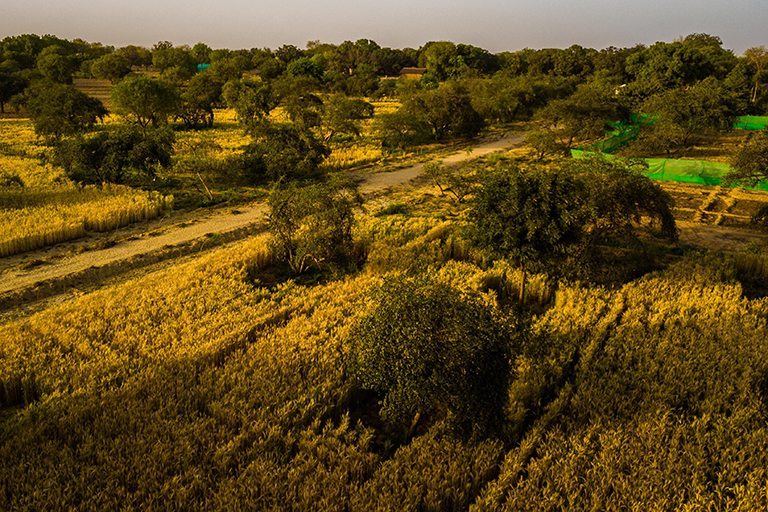On farms in Indiana and across the Midwest, practices like cover crops, no-till planting, and rotational grazing are widely recognized as sustainable methods that sequester carbon and lower the climate impact of farming.
But another, less discussed farming system offers several times the carbon sequestration effectiveness of conventional conservation methods. It’s called agroforestry, the integration of trees and shrubs into farming. The climate-positive practice replaces or supplements annual plants like corn and soybeans with woody, perennial plants like fruit and nut trees that store substantially more carbon.
In a recent paper, Lingxi Chenyang, an environmental law fellow at Indiana University’s Environmental Resilience Institute, and her co-authors lay out the case for wider agroforestry adoption in the US and how changes to federal policy can help.
Less than 2 percent of US farms currently implement some form of agroforestry. As Chenyang and her co-authors document, this represents a tremendous untapped opportunity for farmers and policymakers to reduce the carbon footprint of US agriculture. One 2019 study cited by the team estimates that agroforestry adoption on just 10 percent of US farmland would offset about 34 percent of the country’s emissions from burning fossil fuels.
In the paper, Chenyang and her colleagues take a deep dive into the ecological benefits of agroforestry and the history of US farm policy, which heavily influences the way farmers practice agriculture. To inform their policy recommendations, the team interviewed several conservation and ag policy experts.
In their study, the researchers identified two major barriers to greater agroforestry adoption:
- Social norms against planting productive trees on farmland
- And lack of access to land for those who want to experiment with mixed-species farming.
“Traditional Anglo-American farming practices cut trees down and plant crops in their wake,” Chenyang said. “When trees are planted for conservation, federal policy typically says they must be non-productive. Most US farmland today is owned by older farmers. There’s a lot of skepticism that a labor- and skills-intensive endeavor like agroforestry can work.”
One reason for skepticism stems from the longer timescales required to make agroforestry operations profitable. Trees take years to mature, and establishing farming systems that integrate multiple layers of trees and crops takes substantial investment. “Nut trees take longer to fruit than corn or soy,” Chenyang said. “We have to have adequate price supports for farmers while they’re in that waiting period.”
Once established, however, studies show an agroforestry system can be much less resource-intensive and more resilient to seasonal weather conditions than row crops. Agroforestry operations also provide farmers with multiple revenue streams at different times of the year.
The researchers documented several federal policy recommendations to help farmers make the transition, including:
- Amending conservation programs to allow farmers to plant productive trees;
- Establishing regional hubs for agroforestry research and outreach;
- And creating federal programs, such as a low-interest loan or land bank program, to help agroforestry farmers become established.
The changes required to encourage agroforestry adoption are substantial, but the payoff could be huge for the climate—and for farmers struggling to adapt to changing weather patterns, Chenyang said.
“I think farmers across the country understand that with more natural disasters affecting the country, monoculture practices are not just less ecologically resilient but also less economically resilient. Portraying agroforestry as an economic diversification tool is really essential,” she said.
About Indiana University’s Environmental Resilience Institute
Indiana University’s Environmental Resilience Institute brings together a coalition of university scholars and leaders in the government, business, nonprofit, and community sectors to help Indiana better prepare for the challenges that environmental changes bring to Hoosiers’ economy, health, and livelihood. To learn more and support ERI, visit eri.iu.edu.




